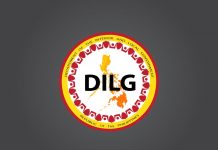At a time when the Philippines is ailed by issues in food security and increasing prices in agricultural products, federalism can serve as the solution to the consequences of a system that concentrates decision-making to only a few, according to the Department of the Interior and Local Government (DILG).
“Each region has its own problems in agriculture so the regional government is in the best place to offer solutions to region-specific problems,” says DILG Assistant Secretary Jonathan E. Malaya.
Should the country make the decision to shift from a unitary setup to a federal one,Malaya says the power exercised by the national government will be spread out to empower the regions.
The regional government will then have the power and funds to invest in innovations, technologies and infrastructures that would assist farmers in plowing, planting, watering, fertilizing, harvesting and processing their own agricultural produce.
He states as an example the incidence of NFA rice shortage and its corresponding effects to the economy.
“We are an agricultural country with rice as our staple, but we continue to experience a crisis in the supply of affordable rice in the country,” says Malaya.
“The national government has been trying to solve the ever-pressing problem of rice supply and costs, but perhaps it’s time that the regional government call the shots,” says Malaya.
Latest data from the Philippine Statistics Authority (PSA) show that palay is the top agricultural produce of the country.
However, palay production in April-June 2018 declined by 1.44% to 4.09 million metric tons (mt) from the 4.15 million metric tons produced in the same period last year.
PSA ascribed this decrease to early plantings in Cagayan Valley and early harvesting in Soccksargen during the last two quarters of 2017.
Central Luzon is recognized as the Rice Granary of Philippines with its agricultural sector expected to run a 5-6% average growth rate by 2022.
Its Regional Development Plan aims to bring the country closer to rice self-sufficiency by 2018, but as it is, rice importations continue to heckle the goal of the government to lift farmers out of poverty.
Meanwhile, Cagayan Valley has experienced an erratic performance in terms of agricultural growth, dragged down by weather disturbances and climate changes.
In 2013 and 2014, the onslaught of several typhoons, coupled with the adverse effects of El Niño in 2015, bogged down the region’s agriculture sector to the non-attainment of this target production in those years.
Despite serving as a main producer of the country’s palay, the region’s economic potential was pulled down by limited marketable products, lack of processing centers and inadequate market linkages.
“All these can be remedied by a federal shift. If we only give the regional government the power to implement programs and projects for its own agricultural sector, then we would see our farmers prospering under federalism,” says Malaya.
The DILG is thus conducting separate, simultaneous roadshows for Central Luzon and Cagayan Valley on September 26-27, 2018 in San Fernando, Pampanga and Cauayan, Isabela, respectively.
The DILG is tasked to spearhead the Duterte administration’s push for a federal form of governance in the country and has been conducting its federalism roadshows in the regions since June.
The roadshows include media forums, media hopping, Pederalismoserye town hall meeting with basic sectors and caps off with a convention/rally for federalism. —DILGCO



